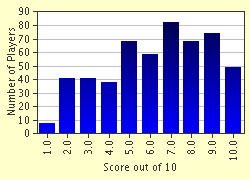Quiz Answer Key and Fun Facts
1. In the year 1604, Johannes Kepler observed a supernova in our Galaxy, approximately 6 kiloparsecs (20000 light years) away from us. This supernova appeared brighter than the brightest star in the night-sky, with its apparent magnitude being -2.5 (as bright as Jupiter) at its peak. In which constellation did this supernova occur?
2. This constellation is the 4th in the zodiac and definitely one of the most inconspicuous! It is supposed to resemble a crab, but is very small and dim, and so to many (including me!), it bears no resemblance to one! This constellation is nearly impossible to see in light-polluted areas like big cities. Its neighbouring constellations are Lynx to the North, Canis Minor and Hydra to the South, Leo to the East and Gemini to the West. Which constellation am I talking about?
3. During the first voyage around the world (1519), the Portuguese navigator Ferdinand Magellan and his crew "discovered" 2 irregularly-shaped objects, which were cloud-like in appearance, in the night-sky of the Southern Hemisphere. These later came to be known as the 2 "Magellanic Clouds", the larger and the smaller being called "Large Magellanic Cloud" (LMC) and "Small Magellanic Cloud" (SMC) respectively. What exactly are the Magellanic Clouds?
4. When most of us hear the world "constellation", we imagine groups of stars which form "shapes" in the night-sky, like that of a hunter, a scorpion, a dipper, a lion, and so on. However, to an astronomer, a constellation is a 'section' of the Celestial Sphere, rather than an imaginary figure. The night-sky has been broken up into 88 pieces, each of these being called a 'constellation'. Which of these 88 constellations is the largest, in terms of area covered on the Celestial Sphere?
5. In the year 1603, Johannes Bayer introduced his "Bayer Designations" for stars, in his star-atlas "Uranometria". According to this system, stars are assigned designations consisting of a Greek letter followed by the genitive of the constellation which contains the star. A few examples of these designations are Alpha Centauri, Gamma Crucis, Nu Draconis, Epsilon Hydrae and Delta Ursae Majoris. In principle, the Greek letters were to be assigned in descending order of brightness of the stars. For example, the brightest star of the constellation Canis Minor became Alpha Canis Minoris, the 2nd-brightest Beta Canis Minoris, and so on.
However, there are numerous examples which have been found where his designations are clearly out of order (resulting in some astronomers even accusing him of having faulty vision!), where the Greek letters weren't properly assigned, such as cases where the star assigned the letter alpha is clearly not the brightest. Which of the following cases is *not* an example of such a designation mistake?
6. If you look into a sky-chart, you'll probably come across several objects with funny-looking names consisting of the capital letter "M" followed by a number. For example, the Pleiades star-cluster in Taurus is labeled "M45", and "M13" is the labelling for the Hercules Globular Cluster. And so it goes on right from "M1" to "M110". But tell me, what exactly does the letter "M" represent in each of these cases?
7. Now coming back to supernovae: on July 4, 1054, Chinese astronomers (and possibly Native Americans) recorded a supernova explosion taking place in the constellation Taurus- so bright that it was even visible to the naked eye during daytime! This supernova explosion, 6,500 light years away, resulted in the formation of a nebula, now more than 6 light years across, and expanding at the rate of 1000 kilometres per second! Also known as M1, what is this nebula commonly referred to as?
8. Well, even for novice star-gazers this question should not be much of a problem, that is, unless you're too far North in the Northern Hemisphere! Tell me, which is the brightest star in the sky (after the Sun, of course), also known as Alpha Canis Majoris?
9. On the Celestial Sphere, all stars appear to have fixed positions. This however is not the case; the stars *do* change their positions on the Celestial Sphere, just not fast enough for it to be easily noticed within our lifetimes. These apparent changes in position, called 'Proper Motion', are not due to any of the Earth's numerous motions such as precession, or chromatic aberrations; rather, they are due to the movement of the Solar System and the Sun as a whole in space, or due to the actual motion of the star itself. Of all the stars, which has the largest proper motion?
10. I can't bear to leave this quiz without a question on the stars in our immediate neighbourhood...well, that is, if you call some 10 light years your "neighbourhood"- the closest star to Sun is some 4.22 light years away. If you go at the maximum speed of the "Voyager 1" space-craft (17 kilometres per second), it'd take some 75,000 years to get there! So tell me, what is the name of this star?
Source: Author
achernar
This quiz was reviewed by FunTrivia editor
crisw before going online.
Any errors found in FunTrivia content are routinely corrected through our feedback system.

